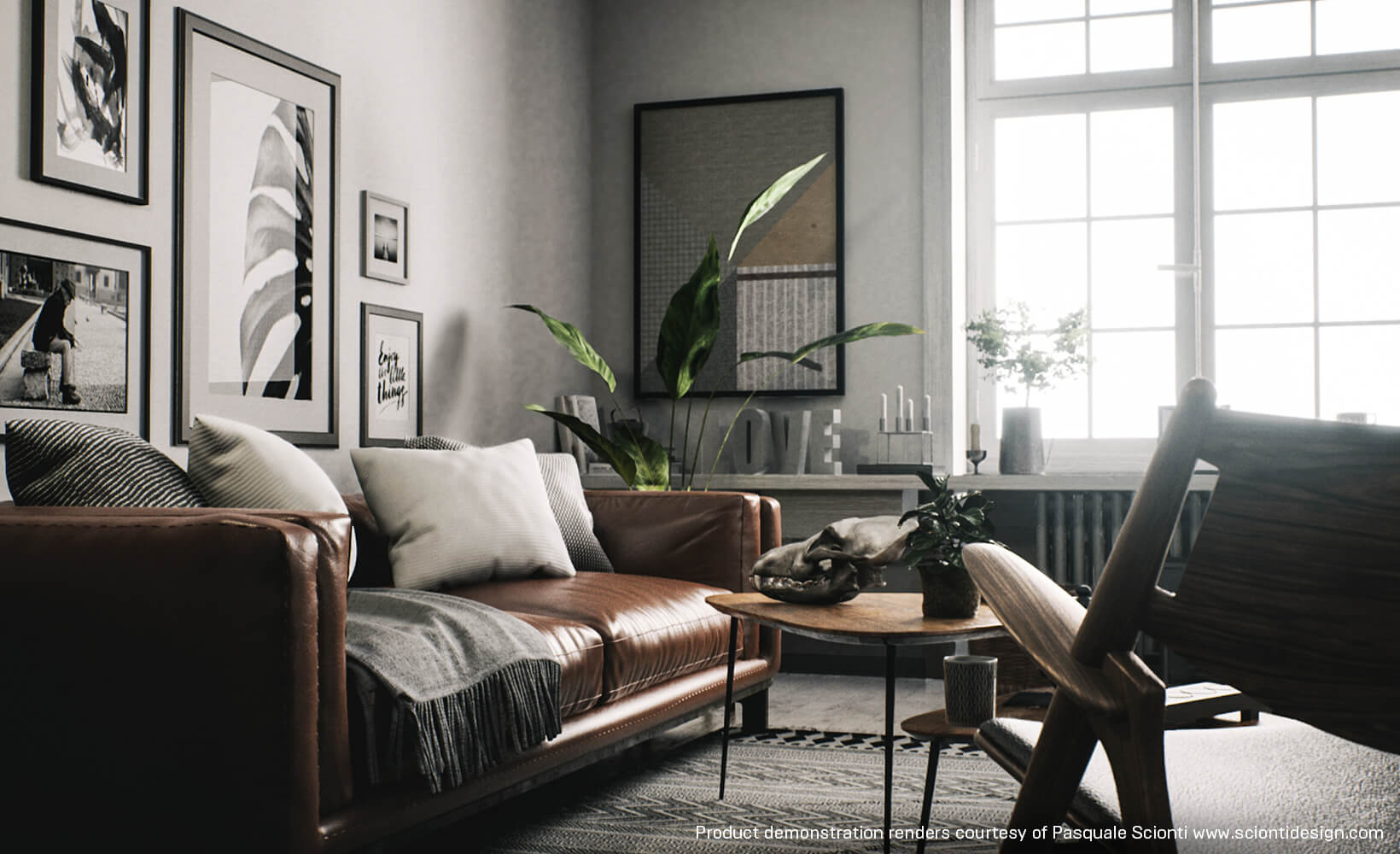September 25, 2019
Real-time ray tracing in Unreal Engine - Part 2: architectural visualization

Shadows
The ability to ray trace shadows in Unreal Engine is particularly useful for sun studies, where accuracy is critical, and for interior designs, where dynamic soft shadows from area lights that capture fine details in areas like upholstery can make the difference between “close but no cigar” and completely convincing. Based on a light source’s size and angle, an object’s shadow will be sharper near the contact surface than it will be farther away where it softens and widens—just as it would in real life.
In this image with ray-traced shadows, notice how the shadow of the chair on the carpet becomes softer as the distance from the chair increases.
Not only are ray-traced shadows more physically accurate than their depth-map equivalents (see the image above provided by Neoscape), but they are much easier to use—it’s simply a matter of turning on a switch. In contrast, without ray tracing, settings for depth-map shadows have to be optimized depending on the distance of the object from the camera, and require much tweaking to achieve the best compromise between quality and performance.

Soft, ray-traced shadows on the upholstery in this image lend realism to the scene.
Reflections
Ray-traced reflections simulate accurate environment reflections that can support multiple bounces, creating interreflections for reflective surfaces. For architectural projects involving surfaces like polished concrete floors, or walls made of metal and glass, ray-traced reflections bring a whole new level of credibility.
Comparison between screen-space reflections (L) and ray-traced reflections (R). Notice how ray-traced reflections capture the scene much more accurately, especially evident in the cooking pot.
Like shadows, the benefits of ray-traced reflections are two-fold: not only is the quality far superior, but they require virtually no setup; they eliminate the need for the tedious and error-prone placement of reflection probes or planes that only give an accurate depiction from one particular viewpoint. And unlike screen-space reflections, ray-traced ones reflect elements outside the field of view.

Comparison between screen-space reflections (L) and ray-traced reflections (R). Notice how ray-traced reflections in the cabinetry show information that is outside the camera’s frustum.
Sky Lights
For exterior renderings, or interiors with large windows, accurately depicting light from the sky is essential to creating a believable scene. The ability to ray trace Sky Lights enables you to use a high dynamic range (HDR) image to light your scene, producing subtle, soft effects that effectively mimic the real world.
In the examples above, different images are used with the Sky Light, illustrating how ray-traced image-based lighting (IBL) can be used to easily create different moods for the same scene.
Real-time ray tracing in the CGarchitect 2019 Architectural 3D Awards
Now in its sixteenth year, the CGarchitect Architectural 3D Awards is the largest and most prestigious awards event for the architectural visualization industry. This year, there was a new category for the best example of DXR ray tracing in Unreal Studio. We’d like to congratulate Zoan for taking first place, and Pasquale Scionti and SJB Architects for their nominations; the use of ray tracing in their entries is inspiring.
Still image from Zoan’s submission

Still image from Pasquale Scionti’s submission

Still image from Pasquale Scionti’s submission

Still image from SJB Architects’ submission
Ready to see what real-time ray tracing can bring to your architectural visualization projects? Download Unreal Engine today.
